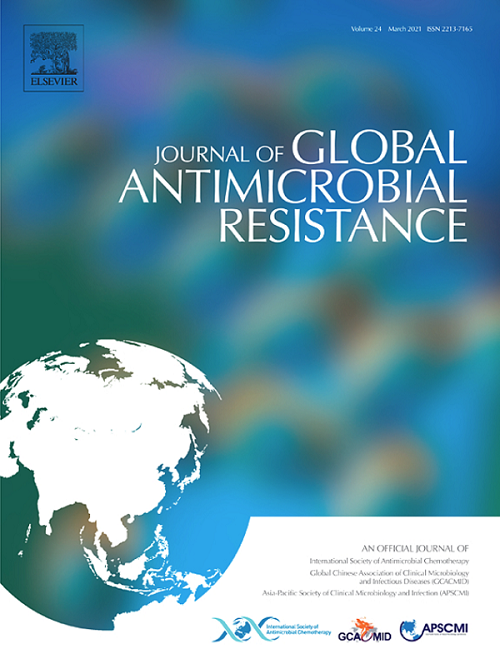耐甲氧西林金黄色葡萄球菌克隆相关死亡风险的系统回顾和荟萃分析
IF 3.2
3区 医学
Q2 INFECTIOUS DISEASES
引用次数: 0
摘要
背景:耐甲氧西林金黄色葡萄球菌(MRSA)是最普遍的病原体之一,每年造成的死亡人数超过一些主要传染病。其临床意义不仅在于其耐药谱的不断扩大,还在于其克隆结构的不断演变。在这篇系统综述和荟萃分析中,我们旨在量化与MRSA克隆相关的死亡率,并评估特定分子特征对结果变化的贡献。方法:我们检索PubMed、Scopus、Web of Science和谷歌Scholar,检索MRSA感染患者死亡率的相关研究和相关分子分型数据,包括克隆复合体、序列型和SCCmec型。结果以专题叙述、表格和数字的形式提出。进行随机效应荟萃分析以估计合并死亡率和患病率比例。结果:27项纳入的研究报告了来自12个不同国家的MRSA分离株。总合并死亡率为22.47% (95% CI: 17.31-28.07),其中欧洲的死亡率最高。MRSA克隆复合体中,CC5致死率最高(50.75%),其次是CC8(37.56%)。虽然ST72(66.16%)是最常见的序列型,但ST764(38.74%)和ST1(38.72%)的死亡率最高。SCCmec IV型占36.95%,但死亡率(18.71%)低于II型(39.09%)和III型(27.52%)。结论:分子诊断在指导治疗和预测预后方面具有明确的优势和致死率。这些见解要求在医院实验室和国家监测系统中扩大MRSA分型项目。本文章由计算机程序翻译,如有差异,请以英文原文为准。
A systematic review and meta-analysis of the risk of mortality associated with methicillin-resistant Staphylococcus aureus clones
Objectives
This systematic review and meta-analysis aimed to quantify mortality associated with MRSA clones and evaluate the contribution of specific molecular features to outcome variation.
Methods
Databases including PubMed, Scopus, Web of Science, and Google Scholar were searched for studies reporting mortality among patients with MRSA infection and associated molecular typing data, including clonal complex, sequence type and SCCmec type. Results were presented in thematic narratives, tables and figures. A random-effects meta-analysis was performed to estimate pooled mortality and prevalence proportions.
Results
Twenty-seven included studies reported on MRSA isolates from 12 different countries. The overall pooled mortality was 22.47% (95% CI: 17.31–28.07), with the highest mortality observed in Europe. Among MRSA clonal complexes, the highest mortality was observed among CC5 (50.75%), followed by CC8 (37.56%). Although ST72 (66.16%) was the most prevalent sequence type, the highest mortality rates were observed in ST764 (38.74%) and ST1 (38.72%). SCCmec type IV (36.95%) was dominant but had a lower mortality rate (18.71%) compared to types II (39.09%) and III (27.52%).
Conclusions
The clear dominance and lethality of specific lineages affirm the clinical utility of molecular diagnostics in guiding treatment and predicting outcomes. These insights call for an expansion of MRSA typing programs in hospital laboratories and national surveillance systems.
求助全文
通过发布文献求助,成功后即可免费获取论文全文。
去求助
来源期刊

Journal of global antimicrobial resistance
INFECTIOUS DISEASES-PHARMACOLOGY & PHARMACY
CiteScore
8.70
自引率
2.20%
发文量
285
审稿时长
34 weeks
期刊介绍:
The Journal of Global Antimicrobial Resistance (JGAR) is a quarterly online journal run by an international Editorial Board that focuses on the global spread of antibiotic-resistant microbes.
JGAR is a dedicated journal for all professionals working in research, health care, the environment and animal infection control, aiming to track the resistance threat worldwide and provides a single voice devoted to antimicrobial resistance (AMR).
Featuring peer-reviewed and up to date research articles, reviews, short notes and hot topics JGAR covers the key topics related to antibacterial, antiviral, antifungal and antiparasitic resistance.
 求助内容:
求助内容: 应助结果提醒方式:
应助结果提醒方式:


